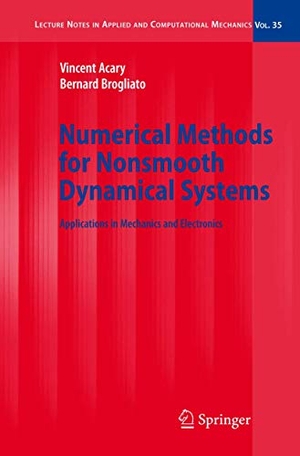Für statistische Zwecke und um bestmögliche Funktionalität zu bieten, speichert diese Website Cookies auf Ihrem Gerät. Das Speichern von Cookies kann in den Browser-Einstellungen deaktiviert werden. Wenn Sie die Website weiter nutzen, stimmen Sie der Verwendung von Cookies zu.
Cookie akzeptieren
Bernard Brogliato / Vincent Acary
Numerical Methods for Nonsmooth Dynamical Systems
- Springer Berlin Heidelberg
- 2010
- Taschenbuch
- 548 Seiten
- ISBN 9783642094644
This book concerns the numerical simulation of dynamical systems whose trajec- ries may not be differentiable everywhere. They are named nonsmooth dynamical systems. They make an important class of systems, rst because of the many app- cations in which nonsmooth models are useful, secondly because they give rise to new problems in various elds of science. Usually nonsmooth dynamical systems are represented as differential inclusions, complementarity systems, evolution va- ational inequalities, each of these classes itself being split into several subclasses. The book is divided into four parts, the rst three parts being sketched in Fig. 0. 1. The aim of the rst part is to
Mehr
Weniger
zzgl. Versand
in Kürze